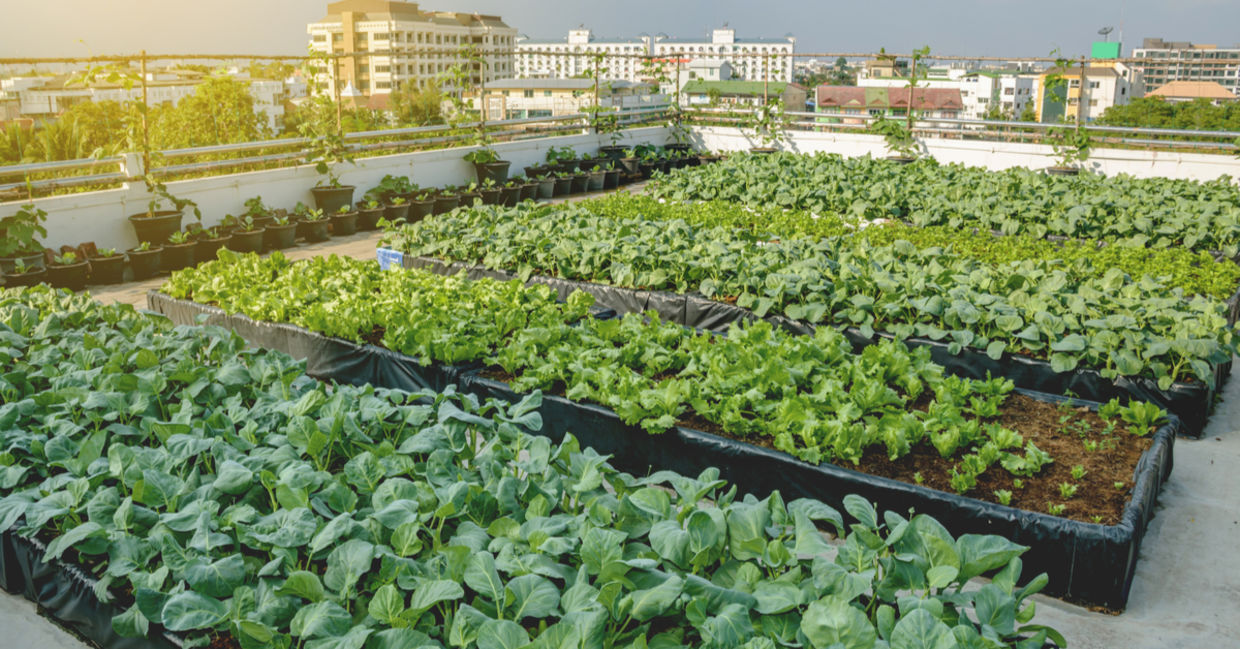
(YuRi Photolife / Shutterstock.com)
Urban farming is just one of the new agricultural models that will help feed a hungry and growing world. Utilizing roof tops, indoor spaces, and community gardens, urban farming has become a global movement to produce sustainable food for people in need.
Paris is just one large city that has sprouted rooftop farms. In an effort to make the French capital greener, in 2016 the city launched Parisculteurs, a project which plans to cover the rooftops and walls with vegetation by 2020. One-third of the space is to be used for urban farming.
Now, the world's largest urban farm – 150,000 square feet (14,000 square meters – is under construction by the French firm Agripolis in the south-west of the city on the roof of the Paris Expo Porte de Versailles, a huge entertainment complex that is being renovated.
The plan is to grow more than 30 different species of organic fruits and vegetables according to The Guardian. The garden is expected to harvest approximately 1,000 KG of produce every day in season. With the use of hydroponics and soil-free growing, the farm is expected to have a very small carbon footprint.
Change starts from the top.
— World Economic Forum (@wef) August 27, 2019
???? Read more: https://t.co/MSMmzS3wRy pic.twitter.com/dxfH6vOfPV
“The goal is to make the farm a globally-recognized model for sustainable production,” Pascal Hardy, founder of Agripolis told The Guardian. “We’ll be using quality products, grown in rhythm with nature’s cycles, all in the heart of Paris.”
The farm will also have its own restaurant onsite that will seat around 300 people and will be run by the Paris chain of rooftop venues, the Paris Expo Porte de Versailles, the farm will also have its own on-site restaurant and bar with capacity for around 300 people. Run by Paris’s renowned chain of rooftop venues, Le Perchoir, and will feature the produce grown on the farm.
“Our fresh produce will be used to feed the inhabitants across the south-west of the city – either directly, through veg-box schemes or via shops, hotels and canteens – thereby helping to reduce food miles,” Hardy said. “Furthermore, we won’t be using any pesticides or chemicals, so the farm will be a haven for biodiversity.”
The farm will also offer educational tours, team building workshops, and will host special events. According to The Guardian, residents will be able to lease their own small wooden crate vegetable plots to grow their own food.
Our vision is a city in which flat roofs and abandoned surfaces are covered with these new growing systems,” said Hardy. “Each will contribute directly to feeding urban residents who today represent the bulk of the world’s population.”
Paris is not the only city to have large scale urban farms. In New York City, Brooklyn Grange is one of the world's largest urban farms. The farm opened in 2010 and consists of 65,000 square feet (6,038 square meters) of the rooftop of a large warehouse. Although it produces thousands of pounds of produce a year, this is a very small amount compared to what is being built in Paris
Indoor Vertical farming is also a sustainable alternative to conventional agriculture. Companies like AreoFarms in New Jersey that was founded in 2004, use only one percent of the land that conventional farming uses and its yields are 390 times higher. The startup Plenty in South San Francisco, California actually uses robots in its indoor farm.
These innovative new farming methods like rooftop urban farms will have to be used if we are to feed the global population in 2050. But if all the world's largest cities committed to anything even close to Paris's Parisculteurs, it looks like this is becoming very achievable.
YOU MIGHT ALSO LIKE:
5 Inspiring Urban Community Garden Projects for City-Dwellers
5 Ways to Feed a Growing World Population Sustainably
Vertical Farming is a Sustainable Alternative to Conventional Agriculture







